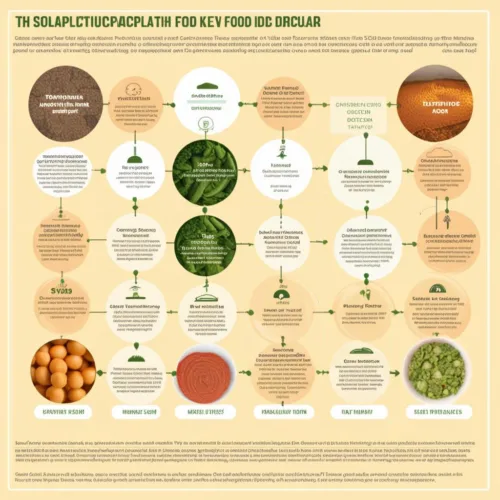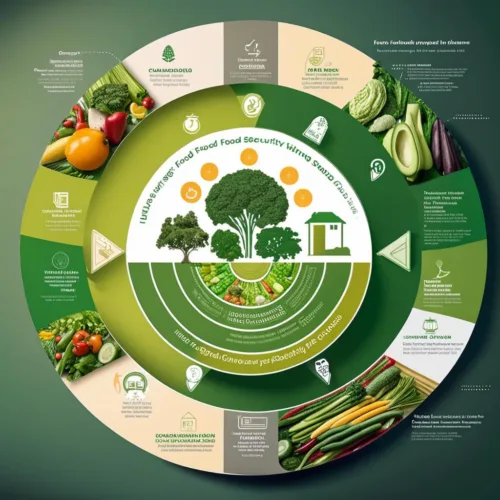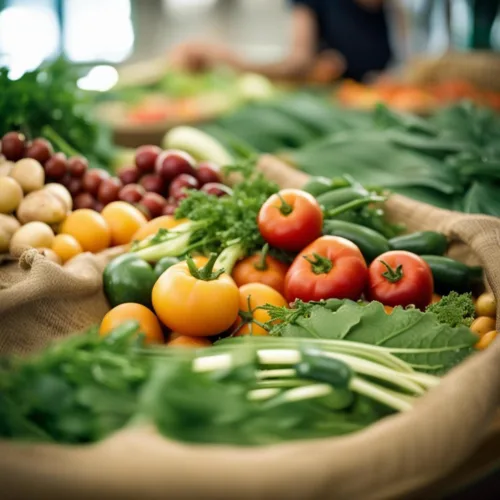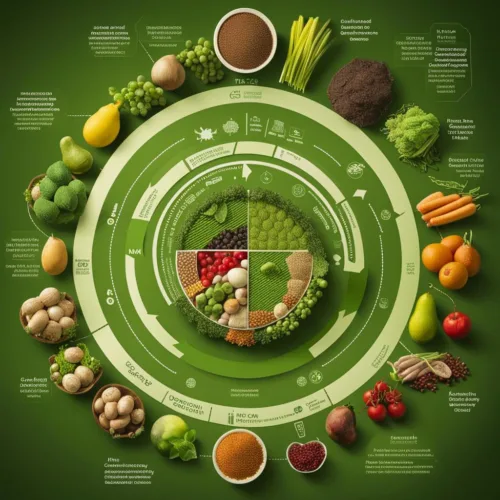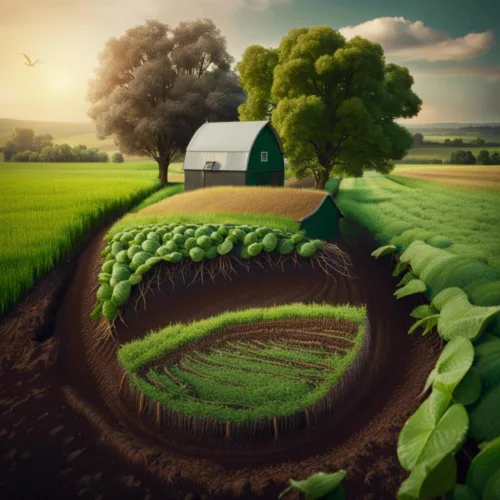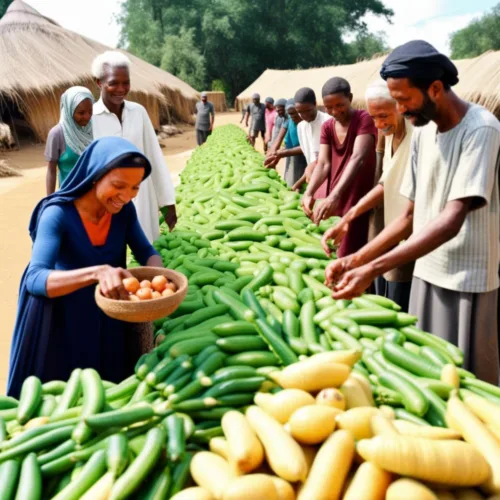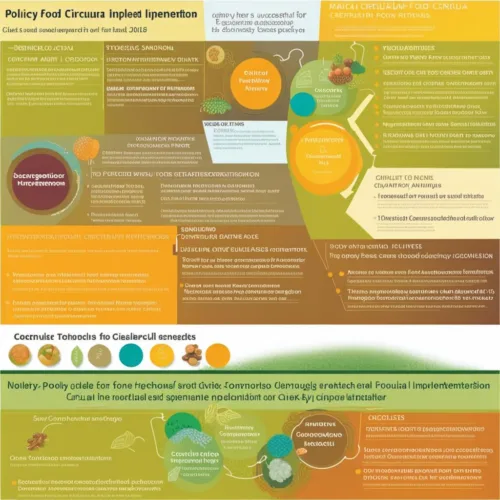Originally posted 2023-10-02 07:46:30.
Wonder how your food gets to your plate? Let’s take a fun journey from growing to eating! Discover the exciting world of the Key Food Circular
This article will discuss the importance and workings of the Key Food Circular. It will be concise and easy to follow, allowing you to explore the intriguing food world without feeling overwhelmed.
Let’s discuss the uniqueness of the Key Food Circular. From seed to harvest, we will explore how food grows with sunlight, water, and nutrients and is carefully harvested by farmers. We’ll learn about planting, cultivating, and the effort behind producing our food.
Food transport, like your commute to school, involves a relay race. It travels from farms to markets and eventually to your local grocery store, overcoming long distances with the help of people and vehicles.
The food circular is not just about growing and transporting food. It also involves sustainable farming practices that protect our planet. We will learn why it’s important to reduce waste, protect the environment, and ensure future generations can enjoy our delicious food.
This article will use active voice and transition words to bring the food circular to life and guide you through this exciting journey.
Ready to explore the world of the food circular? Journey through how your food is grown, transported, and enjoyed. Gain a new appreciation for your plate and the unique processes behind it. Let’s discover the secrets of the critical food circular together!
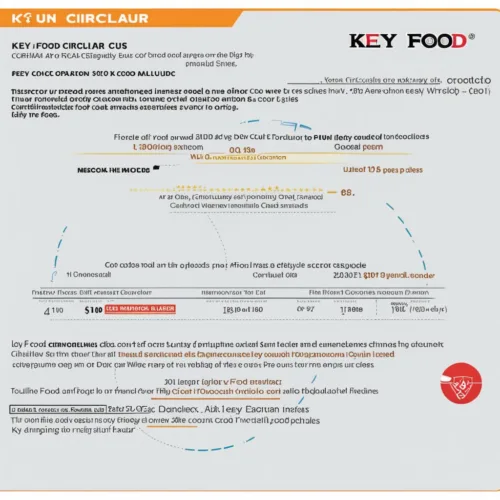
Table of Contents
- Introduction: Understanding the Key Food Circular
- Highlighting Sustainable Food Practices: A Comprehensive Overview
- Exploring the Environmental Footprint of Key Food Circular
- Analyzing the Economic Impact of Key Food Circular Initiatives
- The Social Implications of Adopting the Key Food Circular
- Empowering Local Communities through Key Food Circular
- Reducing Food Waste: A Vital Component of the Key Food Circular
- Revitalizing Farming Methods: Key Food Circular Recommendations
- Enhancing Food Security with Key Food Circular
- Promoting Organic Farming within the Key Food Circular
- Championing Biodiversity Preservation through Key Food Circular
- Maximizing Resource Efficiency in the Key Food Circular Framework
- Transitioning to Regenerative Agriculture under the Key Food Circular
- Empowering Small-Scale Farmers with Key Food Circular
- The Role of Technology in Advancing the Key Food Circular
- Collaboration and Partnerships: Key Food Circular Strategies
- Policy Interventions for Successful Key Food Circular Implementation
- Empowering Consumers: Key Food Circular Education and Awareness
- Conclusion: Embracing a Sustainable Future through the Key Food Circular
- Q&A
- Future Outlook
Introduction: Understanding the Key Food Circular
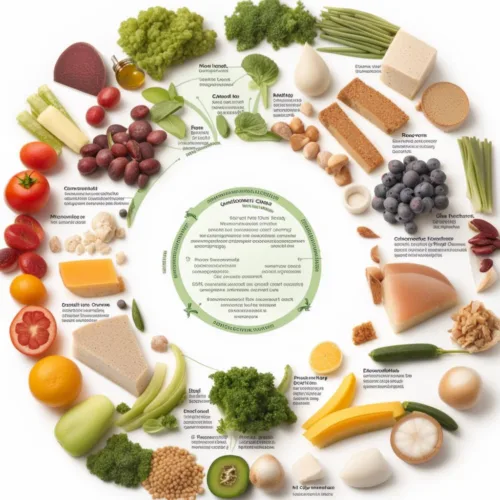
The food circular is a magical wheel that teaches us about food. It shows where it comes from, how it’s made, and why it’s good for our bodies. Let’s explore this amazing world!
Our food comes from different sources. Plants provide fruits and vegetables, animals give us meat and dairy, and the ocean offers fish and shrimp. It’s important to have a variety of foods for good health.
Now, let’s discover how food is made. The food circular reveals that cooking is an essential process. It magically transforms food through boiling, baking, frying, or grilling. This ensures delicious and safe meals. Remember, the food circular reminds us to always cook properly before eating.
Discover why food is good for our bodies. Different foods give us superpowers – fruits and vegetables make us strong and energetic, meat and dairy products build muscles and bones, and grains and cereals help us think and learn. To stay healthy, we need a balanced diet with all these types of food.
In conclusion, the food circular is a map that helps us understand food. It shows where it comes from, how it is made, and why it is good for our bodies. By following it, we can eat a healthy and balanced diet. So next time you eat, follow the food circular and enjoy the food!
Highlighting Sustainable Food Practices: A Comprehensive Overview
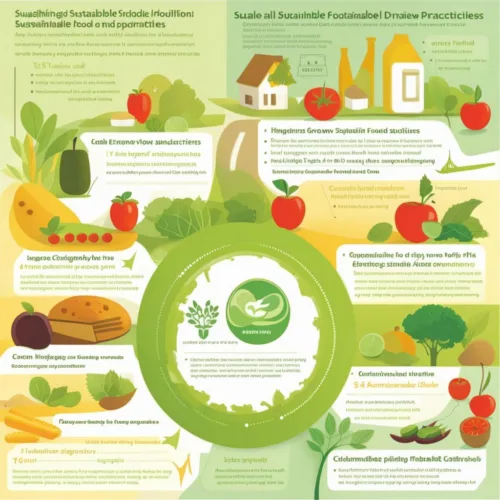
In the food world, we can protect the planet and our health and ensure everyone is fed by practicing sustainable food production, which takes care of the environment, communities, and our health.
Sustainable food production avoids harming the Earth by using eco-friendly methods. It involves growing food without polluting air or water, conserving energy and resources, and ensuring long-term availability.
A sustainable food system is similar to a puzzle, with pieces that create good food, protect the environment, and provide fair treatment and wages for farmers. It aims to benefit everyone.
Sustainable agriculture is about meeting our current needs while ensuring we can continue farming in the future. We aim to grow food, make clothes without harming the Earth or soil and protect the land and animals while providing food for all.
In summary, sustainable food practices focus on preserving the planet, ensuring healthy food, and treating people fairly. It’s a connected circle that aims to improve our world. We contribute by supporting sustainable food practices and making choices that benefit the Earth and its inhabitants.
Little one, we can make a big difference in the world by being mindful of our food. Let’s care for our planet, enjoy its bounty, and ensure future generations can too.
Exploring the Environmental Footprint of Key Food Circular
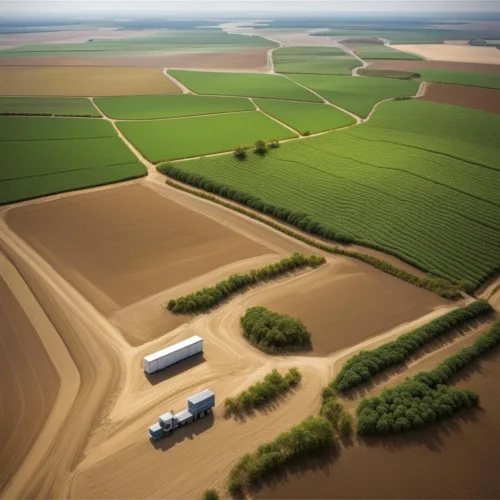
The food circular puzzle is essential in understanding its environmental impact. Like preserving a favorite toy, the critical food circular aims to make and utilize food without harming the planet.
When discussing the food system’s environmental impact, we are referring to its effect on the Earth. Like leaving footprints on the sand when walking, the food system can also leave footprints on the environment. These footprints can be positive or negative, depending on how the food is grown, produced, and consumed.
To reduce harm to the environment, use less energy and water. When we eat food, we need power to grow, transport, and cook it. However, excessive power usage harms the environment. To address this, use renewable energy sources like solar or wind power.
Water is precious, and we should avoid wasting it. Agriculture consumes excess water, so we should be mindful of our usage and conserve it to protect the planet.
The food circular emphasizes reducing waste, like reusing toys. It aims to use every part of the food and ensure enough for everyone, benefiting the planet.
The food circular teaches us how to care for our planet while enjoying our food. It emphasizes using less energy, conserving water, and reducing waste. By being mindful of these things, we can positively impact the environment and create a sustainable future. Let’s work together to make our planet better!
Analyzing the Economic Impact of Key Food Circular Initiatives
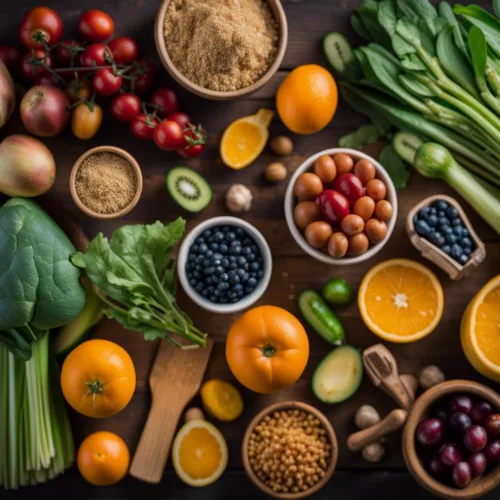
Essential Food Circular Initiatives are creative and innovative strategies implemented by Key Food to promote sustainability and reduce waste. Let’s break it down in a way that a 5-year-old can understand!
What is the Key Food Circular?
Key Food Circular is a program started by Key Food to ensure we use our resources wisely and not waste anything. It’s like when you have a toy, and instead of throwing it away, you give it to someone who can still play with it. Essential Food wants to do the same thing but with food!
How does it work?
Key Food Circular has a plan to ensure we don’t waste too much food. They bring together all the good food that can’t be sold anymore but is still safe to eat. Then, instead of throwing it away, they give it to people who need it. It’s like sharing your snacks with your friends!
What are the benefits?
By doing all this, Key Food helps people who might not have enough to eat, but they also help the environment. When food is thrown away, it creates a lot of trash that can be harmful. But when Key Food gives it to others, it reduces waste and helps keep our planet clean and healthy like a giant playground!
Why is it important?
It’s important because we must care for our planet and ensure everyone has enough to eat. Essential Food Circular teaches us that even if something can’t be used in one way anymore, it can still be helpful in another way. When you have a broken toy, you can use its parts to build something new and exciting!
How can I help?
There are many ways you can help Key Food Circular! You can learn not to waste food by only taking what you can eat and finishing your plate. You can also tell your friends and family about Key Food and its importance. Together, we can all make a big difference!
The Social Implications of Adopting the Key Food Circular
The critical food circular helps us protect the environment through mindful food choices, creating a circle that sustains a healthy planet.
Let’s use natural methods instead of harmful chemicals and pesticides to grow food. It’s better for our bodies and the Earth.
Next, think about how we get our food. Instead of driving long distances to get our groceries, we can support local farmers and markets. Not only does this mean fresher food, but it also reduces pollution from transportation.
Think about what happens after we eat. Instead of throwing food scraps away, we can compost them to create nutrient-rich soil for growing more food. It’s like magic for our gardens!
Another essential part of the critical food circular is reducing waste. We can try only to buy what we need and use up all our food before it goes bad. By doing this, we reduce the amount of food that goes to waste and save money, too!
We should recycle as much as possible by separating waste correctly and recycling items like plastic bottles, cans, and paper. This gives them a second life instead of ending up in a landfill.
The food circular aims to protect our planet and create a better world for future generations. It is like a puzzle that fits together to form a healthy and sustainable picture.
Empowering Local Communities through Key Food Circular
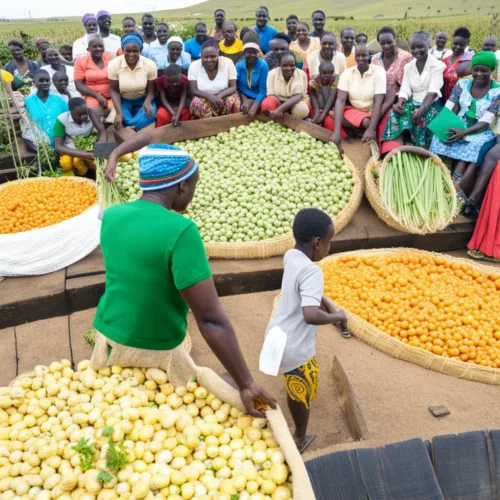
In the adult world, there’s something called the “key food circular.” It’s a big puzzle that helps us care for our food and ensure everyone has enough to eat. Let me explain it to you, my little friend as if you were 5.
In a village, a group of friends enjoys farming and raising animals. They often have excess food or face shortages. This is when the important food circle becomes helpful.
The food circular is a unique plan that helps friends share extra food, encouraging support and cooperation. By helping each other, nobody goes hungry, and everyone has enough to eat.
To promote food exchange, friends can trade their surplus produce. For instance, a friend with extra tomatoes can exchange them for potatoes with another friend. It’s like a fun food-swapping game.
It’s not only about trading food. The food circular teaches friends to care for the land and the environment. They learn to use compost and magic food for plants, save water, and protect helpful animals and insects.
These friends follow the food cycle, becoming superheroes in their community. They prevent hunger, care for the environment, and create a happy place to live. They form a big family, helping each other and ensuring everyone is well-fed.
The food circular is a secret plan for villagers to grow, share, and care for the Earth. It promotes kindness, sharing, and unity, ensuring everyone has enough food and happiness.
Remember, being kind and sharing is essential, like the friends in the critical food circular. Together, we can create a better world for everyone.
Reducing Food Waste: A Vital Component of the Key Food Circular
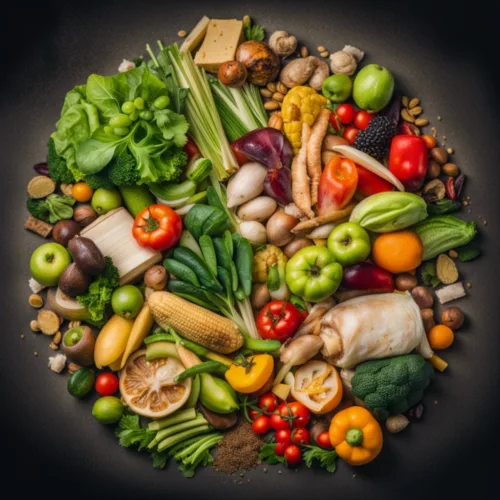
Food waste is when we throw away food that could still be eaten. It’s like when you have a plate of yummy veggies, but you don’t finish them all, and they end up in the trash instead of going into your tummy. This happens a lot worldwide, and it’s unsuitable for many reasons.
Wasting food means wasting the hard work of farmers who grow and produce it, as they put in a lot of time and effort. Their efforts are in vain if we don’t use the food they provide.
Wasting food harms the environment by producing greenhouse gases that cause climate change. We must be cautious with our food to avoid these problems.
Here’s where the “key food circular” comes in. It suggests using food wisely and efficiently. Instead of wasting it, we can reduce waste and find valuable uses. This includes giving it to those in need or using leftovers in new recipes.
Farm-to-fork programs connect us with farmers for fresh food, reducing waste by buying what we need and supporting local farmers.
Using new technologies and tools can help us reduce food waste. They allow us to track our food, plan meals effectively, and utilize leftovers. It’s like having a helpful reminder not to waste food and make the most of what we have.
Reducing food waste is crucial. It assists farmers, preserves the environment, and guarantees sufficient food. We can help by being mindful of our purchases, using what we have, and supporting initiatives against food waste. Let’s collaborate to prevent food destruction.
Revitalizing Farming Methods: Key Food Circular Recommendations
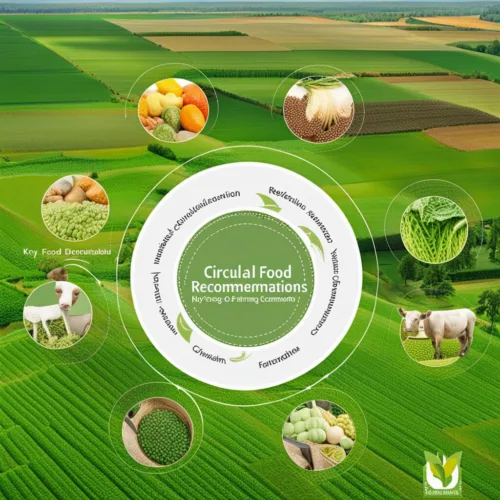
The food circular approach aims to find sustainable ways to produce and consume food, forming a connected and efficient cycle. Consider this simple example.
When we eat an apple, the seeds can be planted to grow new apple trees. This is called farming, but there are problems with traditional methods.
First, we must use many resources like water, fertilizers, and pesticides to grow our food. These things can harm the environment and even make us sick if they end up in our food. That’s not good, right?
Farmers often produce excess food, causing waste. This harms farmers and the environment due to wasted effort and increased greenhouse gas emissions.
So, what can we do to make farming better and more sustainable?
Here are some essential food circular recommendations:
- Reduce, reuse, and recycle: Farmers can reduce farm waste by reusing compost and animal manure as fertilizer instead of harmful chemicals. They can also recycle water and find ways to use it more efficiently.
2. Supporting local and organic farming reduces harmful chemicals, supports local communities, and helps our planet. It’s like helping our neighbors and taking care of our planet simultaneously.
3. Protect Biodiversity: Farmers can protect biodiversity by growing diverse crops instead of just one type, attracting beneficial insects and avoiding harmful pesticides.
4. Technology aids farmers in determining the best time and method for cultivating crops. Sensors measure soil moisture and temperature, while drones promptly monitor fields to identify issues.
5. Educating all, including farmers and policymakers, about the benefits of sustainable farming is crucial for a better future. Collaboration and support for the food circular approach can positively impact us and the planet.
The circular food approach goes beyond just growing and eating food. It includes environmental care, community support, and safe and nutritious food access. These recommendations support sustainable farming and a healthier world.
Enhancing Food Security with Key Food Circular
The critical food circular is like a plan or system that helps us ensure we always have enough food . It’s like a circle that keeps going around and around to keep food coming to us. Let me explain it to you step by step.
Imagine a big circle representing the entire process of making and growing food. It includes farmers, factories, stores, and kitchens.
Let’s discuss the steps in farming. Farmers plant and care for seeds, which grow into crops. They harvest the produce and send it to factories.
Factories process crops into various foods like wheat turning into bread or milk, becoming cheese. They guarantee food safety and package it for store delivery.
Once the food is at the stores, we can buy it. We can choose from various foods like fruits, vegetables, meats, and snacks. We bring the food home and cook it in our kitchens to make delicious meals.
When eating food, we should consider what to do with the leftovers. Instead of throwing them away, we can compost or turn them into fertilizer. This helps us grow more crops and maintain the circle.
The Food Circle ensures enough food for all by coordinating farmers, factories, stores, and consumers to eliminate waste and ensure everyone is fed.
The essential food circular ensures abundant food by covering every step and avoiding waste. It involves farming, food production, selling, and managing leftovers. It’s a collective effort for food security.
Promoting Organic Farming within the Key Food Circular
Organic farming is like a special garden where plants grow naturally. Similar to how we need food to grow and be healthy, plants also require specific things. Organic farming is about providing plants with what they need in a safe and friendly manner.
Organic farming is an environmental superhero that safeguards plants, animals, and people. Unlike conventional methods, it avoids harmful chemicals and pesticides. Instead, natural allies like ladybugs and earthworms protect plants by eating pesky bugs.
Promoting organic farming encourages farmers to use unique methods to grow food, benefitting both us and the planet. It also maintains healthy soil, just like eating good food keeps us healthy.
In our food circle, we prioritize tasty and eco-friendly food. We promote organic farming to protect nature, clean the air, and support hardworking farmers who grow our food with love and care, without harmful chemicals.
By promoting organic farming in the vital food circular, we can all be superheroes for the environment, our health, and the farmers. It’s like being part of a big team that wants to improve the world, one bite at a time.
So, the next time you eat a yummy organic apple or carrot, remember that it was grown with lots of love and a little help from nature’s superheroes.
Championing Biodiversity Preservation through Key Food Circular
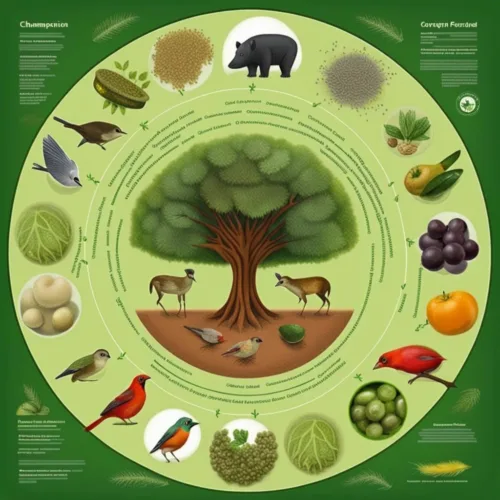
Biodiversity refers to the variety of animals, plants, and insects in our world, much like having diverse friends with different talents.
Key Food’s Circular prioritizes safeguarding animals, plants, and insects to prevent species extinction and preserve biodiversity.
Imagine playing a game to find unique birds in a forest, each with distinct colors, shapes, and songs. Every animal, plant, and insect has something special.
The Key Food Circular provides valuable information on how to protect the species in our world. It presents a plan to support our animal friends by using resources wisely. For instance, instead of cutting down trees, we should focus on planting new ones. Furthermore, we should provide animals with a safe habitat to live in.
We must take care of the environment by avoiding littering on land or water, as it harms living creatures. Additionally, we should limit water and energy consumption to support the survival of animals and plants.
Key Food Circular highlights the importance of preserving nature. We strive to protect species and maintain a healthy environment. Let’s be nature’s friends and preserve biodiversity for future generations.
Remember, biodiversity means having many different kinds of friends, and Key Food Circular is our unique way of ensuring they all stay safe and happy.
Maximizing Resource Efficiency in the Key Food Circular Framework
In the critical food circular framework, maximizing resource efficiency means using our resources in the most innovative and best way possible, like using every little bit of food we have and not letting anything go to waste. It’s like when you’re playing with your toys, you want to use them all and not leave any behind, right?
Transition words can help us understand how this idea works. For example, if we start with one food, like an apple, we can use it to make different things, like apple juice or applesauce. We can transform it into something else to use for longer and not throw it away.
Using active voice means that we focus on the things we can do. For example, we can only buy the food we need, so we don’t have to throw anything away. We can also try to find new ways to use food scraps, like using vegetable peels to compost our plants.
To minimize resource wastage in the vital food circular framework, we must innovate and devise novel approaches to utilize all available resources effectively. This entails employing technology to monitor food inventory and optimize its usage.
In the context of the critical food circular framework, our objective is to make the most efficient use of all available resources, particularly food, in order to minimize waste and explore innovative ways to use them. Such an approach not only helps us preserve the environment but also ensures that there are enough resources for everyone.
Transitioning to Regenerative Agriculture under the Key Food Circular
Transitioning to regenerative agriculture involves changing how we grow our food. It’s like using multiple colors to create a vibrant painting. Similarly, farmers use various techniques to make the soil healthier and more robust in regenerative agriculture.
Improving soil health is crucial in regenerative agriculture. Just as plants require healthy soil, regenerative farmers enhance the ground with compost and cover crops, nourishing it with nutrients and beneficial organisms such as worms and bacteria. These superheroes diligently care for the earth.
Healthy soil functions as a sponge, absorbing rainwater to prevent floods and maintain water clarity. Furthermore, it promotes robust plant growth, analogous to the nourishing effect of fruits and vegetables on our own development. Flourishing plants yield a greater abundance of food, akin to a delectable dish of pasta.
Regenerative agriculture benefits nature by safeguarding farm animals and insects, including vital pollinators like birds and bees, thereby maintaining ecological balance. Farmers implementing regenerative methods establish a secure habitat for these creatures.
When discussing the transition to regenerative agriculture under the Key Food Circular, our objective is to transform how we cultivate our food to enhance its health benefits for the soil, plants, and animals. This process is akin to modifying the approach to painting to create a more vibrant and visually appealing artwork. By implementing diverse methods and nurturing the soil, we can guarantee an abundance of nutritious and delectable food for all.
Empowering Small-Scale Farmers with Key Food Circular
Key Food Circular is a special shopping list for small-scale farmers. It helps them sell fresh fruits, vegetables, and other yummy foods. Instead of a regular shopping list, it’s a special paper filled with all the different kinds of foods the farmers have. It tells us what’s available and how much it costs, so we can pick what we want.
Supporting small-scale farmers is important because they work hard to grow healthy and delicious food. They care for their plants and animals, providing water, sunlight, and nutrients. They also use special methods to protect the environment and ensure their food benefits us.
We can purchase fresh food from farmers using the Key Food Circular. This includes fruits, vegetables, eggs, honey, and homemade jams.
The Key Food Circular helps us discover new foods and support our local farmers simultaneously. Plus, when we buy from small-scale farmers, we’re helping them earn money for their hard work. So, the next time we go to the store and see the Key Food Circular, we can feel proud knowing that we’re making a difference by buying fresh and healthy foods from our local farmers.
In short, the Key Food Circular is a special list that helps small-scale farmers sell their yummy fruits, vegetables, and other foods to us. We can choose from various fresh and tasty options, support our local farmers, and feel good about making healthy choices for ourselves. It’s a win-win situation for everyone!
The Role of Technology in Advancing the Key Food Circular

Technology helps us make, share, and eat food better. Think of it like a big kitchen set that helps with real food instead of toys.
Technology helps farmers grow more food by providing water, sunlight, and essential plant care. This enables farmers to produce abundant fruits, vegetables, and grains, ultimately feeding more people.
The technology ensures food safety. A “fridge” keeps food fresh and prevents spoilage. Improved technology creates fridges that keep food fresher for longer. It also enables food traceability, ensuring safe origins.
But it’s not just about growing and storing food. Technology also helps us with sharing and distributing food. These fantastic apps and websites help connect people with extra food with those who need it. It’s like a magic portal where you can find food without leaving your house!
Guess what? Technology can also reduce waste. Sometimes, we have excess food that goes bad before we can eat it. However, with technology, we can find better ways to utilize this food instead of throwing it away. It’s like a machine that transforms leftover food into compost or energy.
So, technology is like a superhero that helps us grow more food, keep it safe, share it with others, and reduce waste. It’s like having a superpower in the kitchen! And all these fantastic things technology does are part of the “Key Food Circular.” It’s like a big circle where everything is connected to ensure everyone has enough to eat.
Collaboration and Partnerships: Key Food Circular Strategies
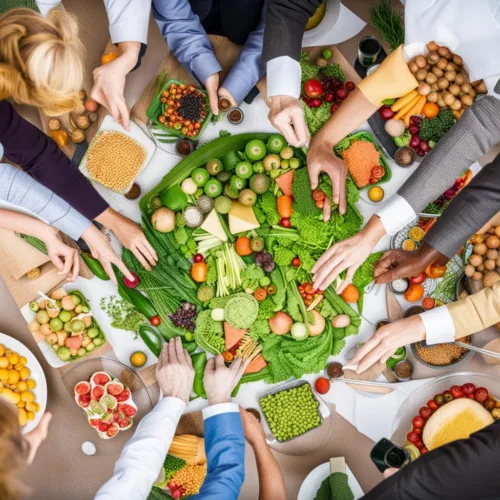
In the world of food and sustainable practices, collaboration and partnerships are vital in implementing key strategies for a circular food system. But what does that mean? Let’s break it down simply as if we were explaining it to a 5-year-old.
You have a beloved toy that you no longer use. Instead of discarding it, you give it to your friend to play with. This collaboration brings joy to both of you.
Now, let’s apply this idea to food. The food system includes growing, processing, packaging, selling, and consuming. We aim to reuse and recycle resources in a circular food system instead of depleting the environment.
We can form partnerships with people and organizations in the food system. Farmers, chefs, scientists, and families can all work together to avoid waste. Farmers can grow food sustainably, chefs can use leftover ingredients creatively, and scientists can develop innovative methods to recycle food waste.
Transition Words: Furthermore, Moreover, Additionally
Active Voice: Farmers grow food using sustainable practices. Chefs create delicious meals using leftover ingredients. Scientists have come up with innovative ways to recycle food waste.
We can create a system that connects everything through collaboration and partnerships, just like a puzzle. Each piece is vital in ensuring we have enough food for everyone while caring for the environment.
To make it even more precise, let’s use some simple examples and proper explanations:
1. Imagine you have a carrot. You give the carrot to a farmer instead of throwing it away after eating it. The farmer can then use it to feed animals or turn it into compost to help plants grow.
2. Let’s say a bakery has leftover bread they can’t sell. Instead of throwing it away, they can partner with a soup kitchen. The soup kitchen can use the bread to make delicious soups and sandwiches for people who need them.
By working together and finding creative solutions, we can ensure that food is not wasted and everyone has enough to eat. Collaboration and partnerships are like superheroes, joining forces to save the planet and ensure a brighter future for all.
Collaboration and partnerships mean working together, finding ways to reuse and recycle food, and ensuring everyone has enough to eat. It’s a team effort, like when you and your friends play together and share your toys.
So, let’s put on our collaboration capes and start making a difference in how we produce, distribute, and consume food. We can create a circular food system that benefits people and the planet.
Let’s go on this adventure together, saving the world one plate at a time!
Policy Interventions for Successful Key Food Circular Implementation
Let’s explain the concept of a circular food system simply for a 5-year-old to understand. It means doing certain things and taking specific steps to ensure our food system works well and helps the environment.
- To comprehend a circular food system, think of a big circle where everything is interconnected and keeps going. Instead of using things once and discarding them, we reuse them, similar to sharing toys with friends.
2. Policy interventions are like rules that adults make to improve things, similar to rules at home or school for fairness and organization. These rules help everyone understand their role in maintaining a smooth circular food system.
3. To make the circular food system work, we must reduce food waste by not throwing away edible food. Instead, we can give it to others or repurpose it in delicious recipes.
4. Promote recycling and reusing. Just like sharing toys, we can recycle packaging and containers. Instead of throwing them away, we can use them again or repurpose them.
5. Support local farmers and businesses by buying food from them instead of big factories nearby. This benefits the environment as it reduces food travel distances and supports our community by helping our neighbors.
6. We can educate people on the benefits of the circular food system and its positive impact on the planet, enabling better choices and environmental care.
In summary, we make rules and take action to use food and resources wisely. We reduce waste, recycle and reuse, support local farmers, and teach others about the importance of the circular food system, making our world better.
Empowering Consumers: Key Food Circular Education and Awareness
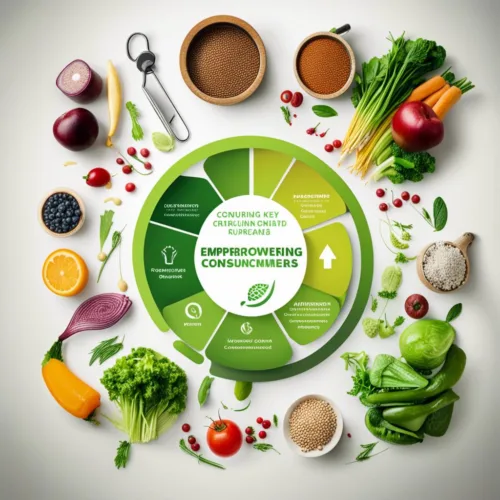
Something is known as the “key food circular.” It’s like a unique map that shows us the journey our food takes from the farm to our plates. Let’s imagine that we are on a food adventure together!
Farmers plant seeds and care for crops, providing water and sunlight for their growth. They work hard to produce healthy, delicious food for us.
Food is brought to a market, a big store where we buy various fruits, veggies, meat, and yummy items. It’s shown on shelves, and we use a cart to gather what we want.
After shopping, we took our food home. Before eating, we cooked it using heat to make it delicious and safe. We can use a stove, oven, or microwave for cooking.
Now that our food is ready, it’s time to enjoy it! We sit down at the table and use our forks and knives to eat. Eating slowly and chewing our food properly is important to nourish our bodies and keep us healthy.
After eating, we have food waste. Instead of throwing it away, we can compost it. Composting turns food waste into soil fertilizer, benefiting plant growth and completing the food cycle.
The Key Food Circular emphasizes knowing our food’s origin, preparation, and use. This knowledge helps us make wiser choices and be more mindful of our planet. It’s truly incredible, isn’t it?
The Key Food Circular is a map that shows our food journey from farmers to markets to our kitchens and soil. It empowers us as consumers and helps us be more aware of our food. Let’s keep exploring and learning together!
Conclusion: Embracing a Sustainable Future through the Key Food Circular
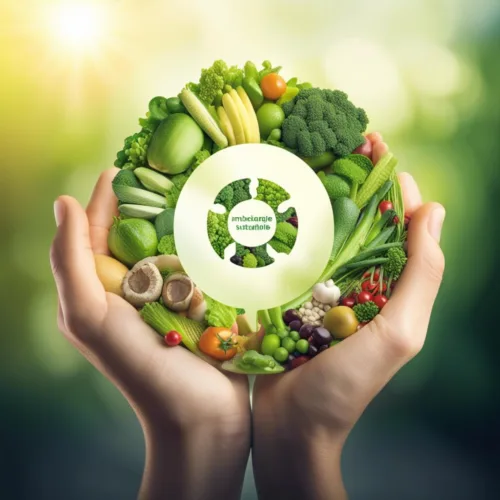
The critical Key Food Circular is like a unique plan to make sure we have enough healthy food for everyone on our planet while also caring for the Earth. It’s all about finding new ways to use resources wisely and reduce waste. This is important because when we waste less food, energy, and water, we can help protect our environment and ensure enough for everyone to eat.
We must work together and make changes to embrace a sustainable future through the key food circular. One thing we can do is to buy and eat more fruits and vegetables that are grown locally. This supports our local farmers and helps reduce the pollution caused by transporting food long distances.
Another critical step is to reduce food waste. We can do this by only buying the food we need and eating leftovers instead of throwing them away. We can also compost our food scraps instead of putting them in the trash. Composting helps create healthy soil, which is suitable for growing more food.
We can also think about the packaging of our food. When we choose products with less packaging, we can help reduce the amount of waste that goes into landfills. We can also recycle packaging materials like plastic bottles and glass jars to give them a new life.
By making these changes, we can all be superheroes for the Earth and create a better future. Remember, every small action we take to reduce waste and use resources wisely makes a big difference. So , let’s work together and embrace a sustainable future through the essential food circular!
Q&A
Q: What is a crucial food circular?
A food circular promotes store deals and discounts to attract customers and encourage them to visit and save.
Q: How can an essential Key Food Circular benefit consumers?
A key food circular benefits consumers by providing promotions and discounts for cost-effective purchasing decisions. It also includes recipes, meal ideas, and tips to inspire consumers to try new foods. Ultimately, it helps consumers save money and enhance their shopping experience.
Q: How can consumers use a key food circular effectively?
A: To use a food circular effectively, consumers should review it carefully. They can find featured products and note discounts or special offers. Comparing prices and considering product quality is key for smart purchases. Planning meals around these items improves the shopping experience. Noting deal expiration dates helps plan store visits. Using the circular, consumers can save money and make informed grocery shopping choices.
Q: Are the prices and deals in a critical food circular applicable in all stores?
A: The prices and deals in a food circular apply to a specific store. Consumers should check the circular of the store they plan to visit for availability and validity dates.
Q: Can I find critical food circulars online?
A: Grocery stores and supermarkets offer their food circulars online. Customers can access them on the stores’ official websites. Online circulars allow users to browse deals, zoom in on products, and create shopping lists. This digital availability helps customers plan their shopping and make informed decisions from home. Subscribing to newsletters or following the social media accounts of grocery stores can also provide updates on the latest circular releases.
Future Outlook
In conclusion, a “key food circular” presents a promising solution for addressing sustainable and efficient food production and consumption.
The critical Key Food Circular offers a pathway towards a more sustainable food system by emphasizing the importance of circular economy principles, such as reducing food waste, promoting local and organic farming, and implementing innovative packaging solutions. Additionally, it encourages collaboration among various stakeholders, including consumers, producers, and policymakers, to collectively work towards creating a more environmentally friendly and socially responsible food industry. As we continue to explore new ways to nourish our growing population while preserving our planet, the essential food circular provides a valuable framework for shaping the future of food.
So, let’s embrace this innovative approach and journey towards a more sustainable and delicious end.

